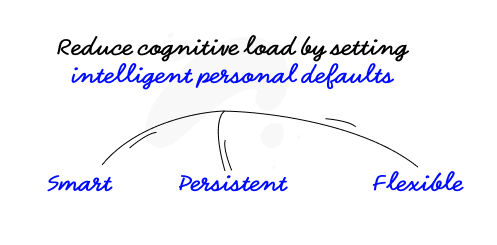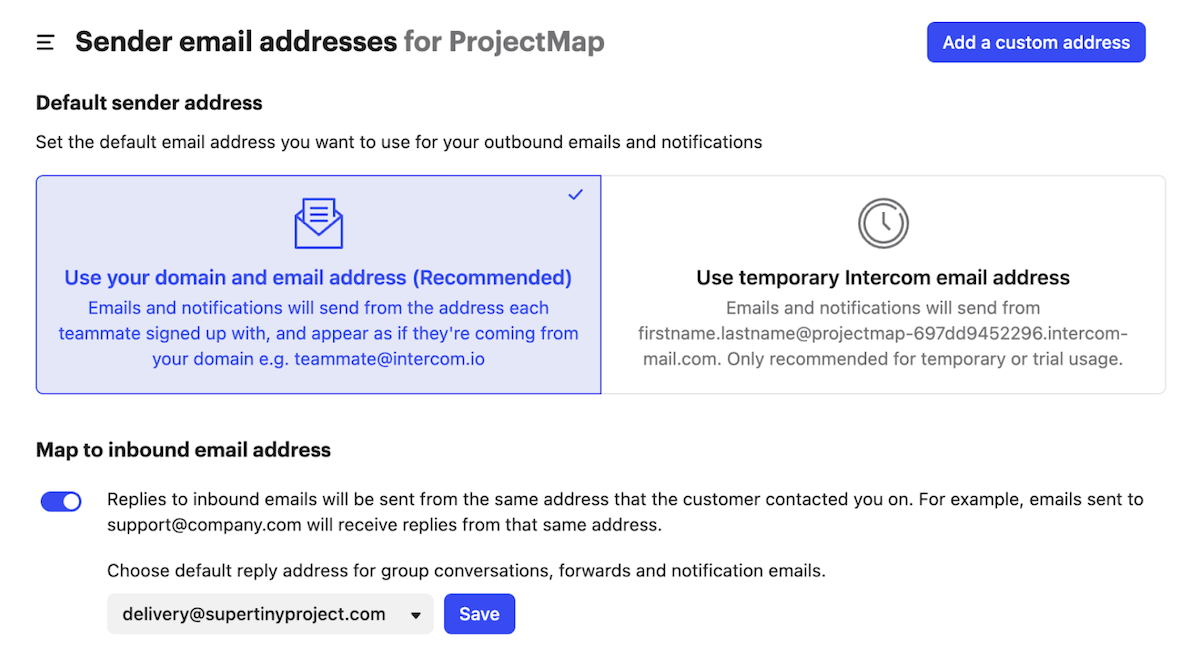
Intercom’s product principles: Creating personal products by design
Our mission – the change we want to create – is to make internet business personal.
Whether we’re creating tools that improve personalization or strengthening our privacy and security, Intercom has always been committed to bringing a personal touch to every change we make to our product.
This is the ninth post in a series exploring our product principles. Here, Pranava discusses our engineering principle “Make it feel personal”.
My team is focused on building and aligning various channels of communication between customers and end users to enable faster resolution – mediums like messaging, email, video/voice, and social channels. Remembering that we’re connecting real people instead of thinking of them as entries in a database helps me to create experiences that improve customer satisfaction and teammate efficiency.
Why is this principle important to teams at Intercom?
We believe every customer is unique with different wants and needs – providing omnichannel customer service solutions that are conversational and personalized is crucial. This means designing and framing workflows that help end users choose the channel that’s most convenient for them at any time, feel totally comfortable in the channel they’re using, and ensure an unbroken flow of communication should they choose to switch channel.
“We apply the ‘make it feel personal’ principle to every step of the design process”
We also work on improving channel capabilities so customers and their users have all the necessary features and tools to resolve queries at their fingertips. A simple example? Supporting the exchange of PDF documents on WhatsApp to save customers from having to switch channels to share necessary information.
How does the principle help in the process of design thinking and product building?
We apply the “make it feel personal” principle to every step of the design process – from ideation to iteration. Here are some of the ways it makes us better designers by encouraging us to:
Consistently prioritize user needs
It’s very easy to be swayed by business needs when working in SaaS environments, so aiming for a personal feel helps the team consciously pivot on solving the most important user needs. It becomes a guiding point that brings focus to real problems and prevents designers from being blinded by intuition. Solving for user needs almost always directly contributes to customer satisfaction and business value – and often aligns with business needs.
“As designers, we’re constantly thinking about how to reduce the number of clicks in a workflow”
Leverage automation and future tech
As designers, we’re constantly thinking about how to reduce the number of clicks in a workflow. With this principle reminding us to work towards personal experiences, we’re encouraged to consider time-based efficiency, user activity, and behavior to develop smart, adaptable, and contextual defaults.
The use of embedded technologies like artificial intelligence, natural language processing, and machine learning within the product supports customers to set up processes in the way that works best for their team – resolving queries quickly for their end users, and in turn improving speed, efficiency, customer satisfaction, and brand loyalty.

Add elements of delight
We strive to help users reach their goals with ease, while making the process feel delightful. Adding elements of delight prompts us to think differently about the products we’re building, to make them intuitive and enjoyable for our users, and to differentiate our product from our competitors’. It can contribute to brand awareness and identity as we create a distinctly “Intercom” style, and help in:
- Better feature discoverability and onboarding
- Setting the right expectations
- Bringing focus to hierarchy
We’ve applied this principle heavily to shaping Intercom’s beautiful onboarding experiences. It also helps us think deeply about how we can add moments of delight when customers first discover a feature, or to give realistic visual feedback on our customers’ progress through micro-animations.
How does the principle help support teams drive positive outcomes for their users?
Making our product feel personal doesn’t just create delightful experiences for our customers, it plays a big part in helping support teams to achieve their goals and increase customer satisfaction.
Increases efficiency
Personalization drives efficient performance, and design choices across the Intercom ecosystem have proved this right time and again. For example, the outbound composer in the new Inbox is designed according to a channel-first model. It provides an option for the teammate to select contacts based on the chosen channel, with a smart contact dropdown that filters by type first and then by name.
This builds a mental model of channel-first behavior that scales more effectively to suit different use cases, and helps mitigate error states when there is a channel-contact data type mismatch. Furthermore, the dropdown defaults to the last used channel, allowing teammates to work faster and cutting down cognitive load.
Improves trust, privacy, and security
Making experiences personal also means offering control and customizability to our customers to help them meet their users’ needs – what they wish to share and how they build trust with their users.
“Trust, privacy, and security thrives when we offer control to the user”
For example, in one of our recent product changes, we shipped a feature that allows customers to map their reply address to the inbound email address that their end users contact them on. This means they can choose to either reveal the teammate email ID or protect it with a generic user ID based on their needs. Some customers may want to build better trust and connections with their end users by revealing their email ID, making them feel more approachable and accessible; while others prefer to protect their teammates’ identity and appear more formal.

Use cases differ for different business needs but designing personalized experiences that meet varying customer expectations is important. Trust, privacy, and security thrives when we offer control to the user.
Improves customer satisfaction
Personalization is closely linked to customer satisfaction. As a rule of thumb, we aim to address customer feature requests as soon as we receive them, and work with those customers personally to understand their expectations of how things should work.
When we think about designing processes at Intercom, we think of scalable experiences that can be personalized to meet customer needs and expectations. A recent example is our simple visual templates that support tickets within emails, and not just within the Messenger, which has immensely increased customer satisfaction.

Making business personal for our customers – and their customers
Our commitment to making business feel personal is woven through every step of our process. When we analyze customer requests and feedback, we’re constantly thinking about how we can make their overall experience smoother, better, and more relevant, so they can continue creating personal connections with their customers.
Explore other posts in our series discussing Intercom’s product principles.





